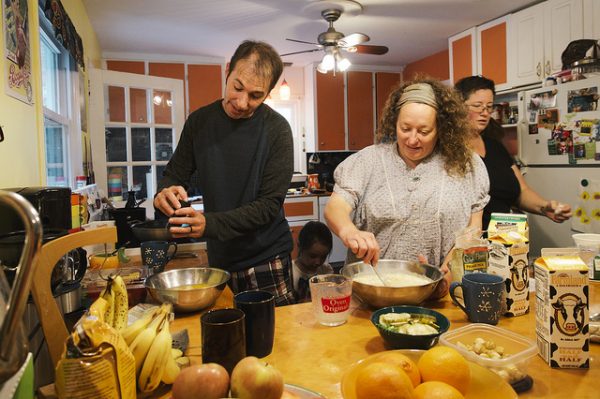
In our busy lives, we sometimes prioritize our time over our money. Services like cleaning, lawn care, child care, and meal delivery offer convenience when it seems impossible to get everything done at work and at home. While it may seem like life is getting busier every year, the use of these types of services — known as “household outsourcing” — has increased surprisingly slowly over the past 30 years, even with household incomes increasing overall. New research by Sabino Kornrich and Allison Roberts finds that the use of these services depends primarily on increases in men’s incomes, not women’s for different-sex, married couples.
Kornrich and Roberts use the Consumer Expenditure Survey (CES), a nationally representative sample of household spending for different-sex married couples beginning in 1980. CES uses interviews to capture larger, less frequent expenditures like rent or monthly childcare payments. Additionally, CES asks people to track their spending for two weeks to get a sense of small, day to day purchases that people often forget, like eating out or an afternoon latté.
Changes in household income are the strongest predictors of outsourcing household services, like hiring a cleaning service or paying for daycare. However, changes in women’s earnings predict little change in outsourcing. This is somewhat unexpected given that compared to men, women tend to take on the majority of household work and childcare, in addition to paid work. Using economic survey data makes it difficult to capture exactly why increases in women’s incomes don’t correspond with more outsourcing of household services. The authors suggest that women may feel pressure to uphold an ideal image of the home and family and try to “do it all.”

Comments